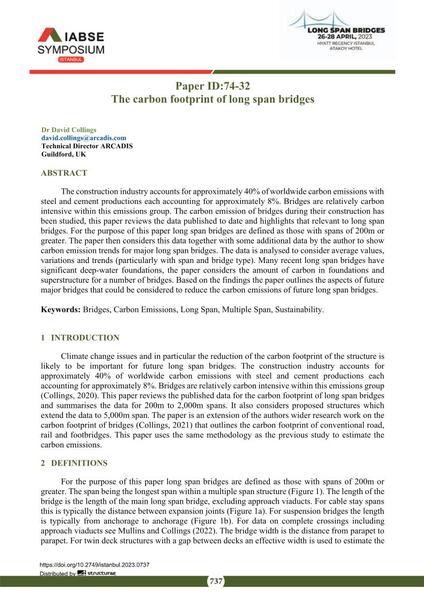The carbon footprint of long span bridges

|
|
|||||||||||
Bibliographic Details
| Author(s): |
David Collings
(Technical Director ARCADIS Guildford, UK)
|
||||
|---|---|---|---|---|---|
| Medium: | conference paper | ||||
| Language(s): | English | ||||
| Conference: | IABSE Symposium: Long Span Bridges, Istanbul, Turkey, 26-28 April 2023 | ||||
| Published in: | IABSE Symposium Istanbul 2023 | ||||
|
|||||
| Page(s): | 737-743 | ||||
| Total no. of pages: | 7 | ||||
| Year: | 2023 | ||||
| DOI: | 10.2749/istanbul.2023.0737 | ||||
| Abstract: |
The construction industry accounts for approximately 40% of worldwide carbon emissions with steel and cement productions each accounting for approximately 8%. Bridges are relatively carbon intensive within this emissions group. The carbon emission of bridges during their construction has been studied, this paper reviews the data published to date and highlights that relevant to long span bridges. For the purpose of this paper long span bridges are defined as those with spans of 200m or greater. The paper then considers this data together with some additional data by the author to show carbon emission trends for major long span bridges. The data is analysed to consider average values, variations and trends (particularly with span and bridge type). Many recent long span bridges have significant deep-water foundations, the paper considers the amount of carbon in foundations and superstructure for a number of bridges. Based on the findings the paper outlines the aspects of future major bridges that could be considered to reduce the carbon emissions of future long span bridges. |
||||
| Keywords: |
bridges sustainability long span multiple span carbon emissions
|
||||
